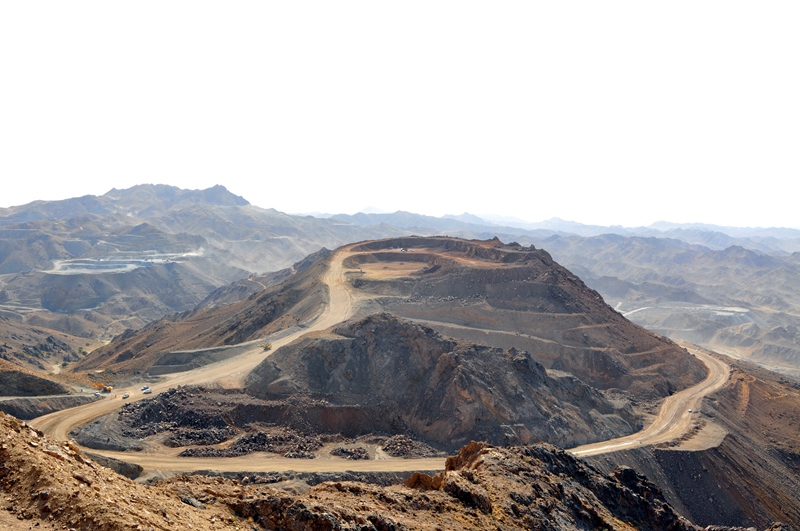
Iron Ore Export Plan Sparks Backlash From IMIDRO

“The world is not going to wait for us while we tinker with export tariffs,” Mehdi Karbasian said.
The Iranian government plans to slap duties on the export of a number of unprocessed minerals, including Iron Ore, as of the next fiscal year (to start March 20, 2017). The plan stipulates a 5-15% stepwise export tariff raise over a three-year period on zinc, lead, marble, chrome, manganese ores and their concentrates, iron pyrite ash, products made using direct lump Iron Ore reduction and granulated Iron Ore.
Iran’s granulated Iron Ore exports are on the rise. The country shipped 15.15 million tons of granulated Iron Ore valued at $581 million during the 10 months to January 19, indicating an over 50% growth compared with last year’s corresponding period.
Government officials, however, do not see rising exports as a good thing. They hold that Iron Ore, instead of being exported, must be used by local iron concentrate and pellet-making factories to create higher value-added products.
Iran seeks to become the world’s sixth largest steelmaker by the end of 2025 as per the goals set in the 20-Year Vision Plan (2005-25). The country will require a steady feedstock of Iron Ore to reach the envisioned 55-million-ton annual output capacity target.
Objection on 2 Grounds
Karbasian objects to the state narrative on two grounds.
For starters, not all of Iran’s Iron Ore deposits are high-grade magnetite ores. In fact, most of them are low-content hematite reserves that are unsuitable for steelmaking unless they go through a costly beneficiation process. The low-purity ore would usually yield higher profits if exported.
Second, Iran currently holds more than 3 billion tons of Iron Ore reserves. As such, Iron Ore production will exceed domestic demand even if the 55-million-ton steel output target is realized.
“Evidently, the government is not following the right path in enacting policies for this sector. Miners are still grappling with recession and slapping duties on exports will make them even more vulnerable,” he said.
Exports Jump in Runup to Deadline
Statistics show Iranian miners exported 13.08 million tons of Iron Ore in the period, a 45% year-on-year increase.
Iranian miners believe the trend will grow, at least until March.
Some experts argue that the planned duty may not become effective at all because the cash flow from Iron Ore exports is essential for Iranian mining, both for private miners and semi-governmental Iron Ore producers.
About 34% of 7.09 million tons of concentrated Iron Ore produced by Golgohar, Iran’s largest Iron Ore miner, have been exported in the nine-month period, representing more than 30% of the company’s total income.
In 2015, Iran exported 14.8 million tons of Iron Ore, down 35% compared to 21.8 million tons in 2014, and was ranked the world’s 11th leading exporter of the steelmaking material.
Most of Iran’s Iron Ore consignments were exported to China. In 2015, exports to China decreased by 40% from 2014 to 13.2 million tons owing primarily to the prevailing low global Iron Ore prices.
Source: Financial Tribune


Trump weighs using $2 billion in CHIPS Act funding for critical minerals

Codelco cuts 2025 copper forecast after El Teniente mine collapse

Electra converts debt, launches $30M raise to jumpstart stalled cobalt refinery

Barrick’s Reko Diq in line for $410M ADB backing

Abcourt readies Sleeping Giant mill to pour first gold since 2014

Nevada army depot to serve as base for first US strategic minerals stockpile

SQM boosts lithium supply plans as prices flick higher

Viridis unveils 200Mt initial reserve for Brazil rare earth project

Tailings could meet much of US critical mineral demand – study

Kyrgyzstan kicks off underground gold mining at Kumtor

Kyrgyzstan kicks off underground gold mining at Kumtor

KoBold Metals granted lithium exploration rights in Congo

Freeport Indonesia to wrap up Gresik plant repairs by early September

Energy Fuels soars on Vulcan Elements partnership

Northern Dynasty sticks to proposal in battle to lift Pebble mine veto

Giustra-backed mining firm teams up with informal miners in Colombia

Critical Metals signs agreement to supply rare earth to US government-funded facility

China extends rare earth controls to imported material

Galan Lithium proceeds with $13M financing for Argentina project

Kyrgyzstan kicks off underground gold mining at Kumtor

Freeport Indonesia to wrap up Gresik plant repairs by early September

Energy Fuels soars on Vulcan Elements partnership

Northern Dynasty sticks to proposal in battle to lift Pebble mine veto

Giustra-backed mining firm teams up with informal miners in Colombia

Critical Metals signs agreement to supply rare earth to US government-funded facility

China extends rare earth controls to imported material

Galan Lithium proceeds with $13M financing for Argentina project

Silver price touches $39 as market weighs rate cut outlook

















